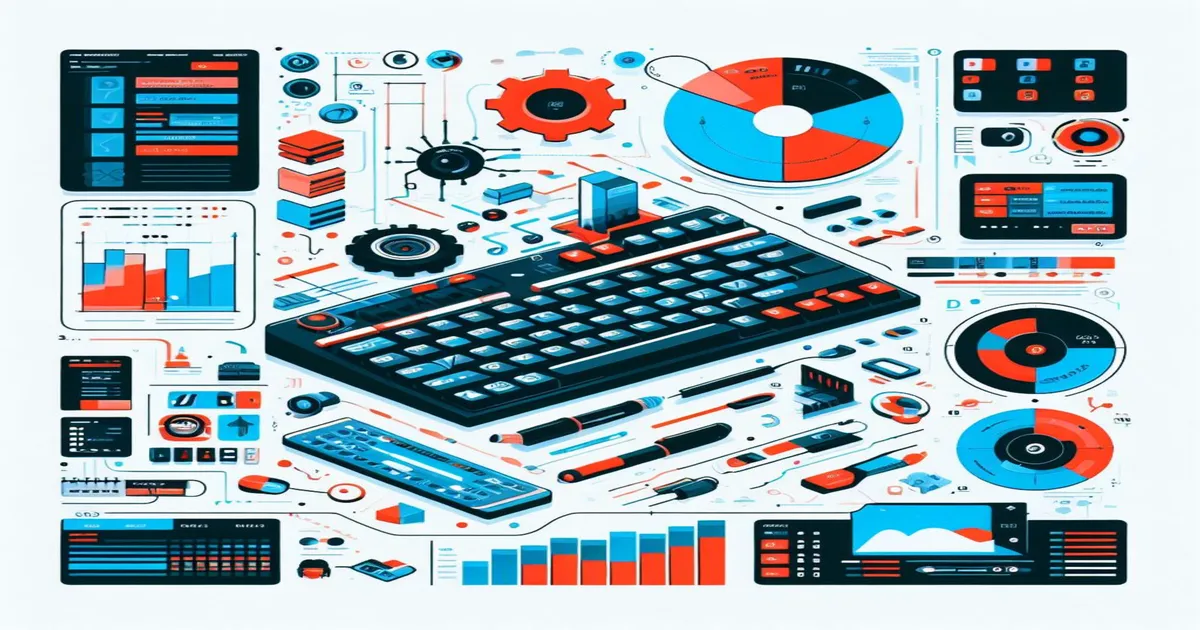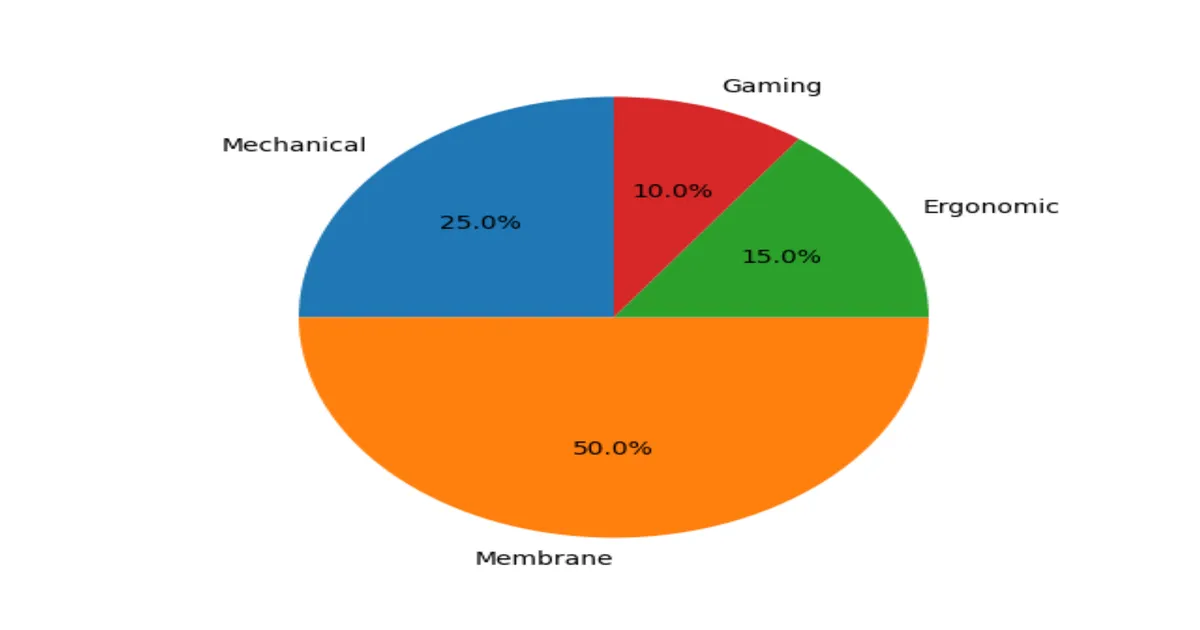Unveiling Amazing Keyboard Statistics
Contents
Toggle
The World Beneath Your Fingertips
In our digital-centric world, keyboards are ubiquitous tools, essential for communication, work, and play. This article explores fascinating keyboard statistics, offering insights into usage trends, market size, and consumer preferences. We’ll also delve into some common questions about keyboards, backed by data and analysis.
The Rise of Mechanical Keyboards
Mechanical keyboards, once a niche product, have surged in popularity. Known for their durability and tactile feedback, they appeal to a wide range of users, from gamers to professionals.
– Popularity Surge: Mechanical keyboards have seen a resurgence in popularity, especially among gamers and professional typists. Statistics show a 60% increase in mechanical keyboard sales over the past two years.
– Durability Factor: On average, a mechanical keyboard can withstand up to 50 million keystrokes, significantly higher than the 5 to 10 million of most membrane keyboards.
Keyboard Market Share Visualization

Typing Speed Wonders
While the average typing speed for most people is around 40 words per minute, professional typists and enthusiasts can achieve much higher speeds, showcasing the efficiency of modern keyboards.
– Average Typing Speed: The average person types at about 40 words per minute (WPM), but professional typists can reach over 120 WPM.
– Record Breakers: The world record for the fastest typing speed on a QWERTY keyboard is 216 words per minute.
Typing Speed Distribution

Ergonomic Designs for Health
Ergonomic keyboards are designed to reduce strain and prevent injuries like carpal tunnel syndrome. Their unique designs and features cater to long-term health and comfort.
– Reducing Strain: Ergonomic keyboards, designed to minimize muscle strain and RSI (Repetitive Strain Injury), are gaining traction. Studies show a 25% reduction in hand discomfort for users who switch to ergonomic keyboards.
– Market Growth: The ergonomic keyboard market is expected to grow by 10% annually, reflecting increased awareness of workplace health.
See Also: Best Ergonomic Keyboards 2023
The Wireless Revolution
Wireless keyboards offer convenience and flexibility, free from the constraints of cables. Their growing popularity reflects the evolving needs of modern computer users.
– Market Expansion: Wireless keyboards have grown in market share by 35% in the last three years.
– Battery Life: Advances in technology have led to wireless keyboards that can last up to 3 years on a single set of batteries.
See Also: Wireless Keyboard: Yes or No?
Environmental Impact and Sustainability
As environmental concerns grow, the focus on sustainable practices in keyboard manufacturing has increased, leading to more eco-friendly options.
– Recycling Efforts: Only 10% of keyboards are recycled properly, but efforts are increasing to improve this statistic.
– Sustainable Materials: There’s a growing trend in using sustainable materials for keyboard manufacturing, like bamboo and recycled plastics.
See: Can I Throw My Keyboard in the Trash?
The Impact of COVID-19 on Keyboard Usage
The COVID-19 pandemic has significantly altered work and lifestyle patterns, leading to increased reliance on keyboards for remote work and communication.
– Remote Work Increase: With the rise of remote work due to COVID-19, keyboard sales have spiked by 30%. See virtualworktips.com
– Hygiene Focus: The demand for easy-to-clean and antimicrobial keyboards has risen by 40% since the pandemic began.
Gaming Keyboards: A Market of Their Own
Gaming keyboards, with their specialized features, form a significant segment of the keyboard market, driven by the booming gaming industry and e-sports.
– Gaming Dominance: Gaming keyboards make up 20% of all keyboard sales, with features like RGB lighting and programmable keys being major selling points.
– E-Sports Influence: The growth of e-sports has led to a 50% increase in specialized gaming keyboard sales.
See Also: Best 3 FPS Gaming Keyboards 2023
The Future of Keyboards
Innovations in keyboard technology continue to evolve, with future designs potentially incorporating advanced features like AI and voice recognition for enhanced user experience.
– Voice Recognition Integration: Future keyboards may integrate voice recognition for enhanced accessibility.
– AI-Powered Predictive Typing: AI technology is expected to revolutionize typing efficiency with predictive text and error correction.
Wrapping Up the Keys to Success
Keyboards are integral to our digital lives, evolving to meet diverse user needs. From ergonomic designs to gaming keyboards, their impact is vast and varied. As technology advances, keyboards will continue to adapt, offering new features and efficiencies.
They have adapted and will continue to adapt to our needs, offering insights into how we work, play, and communicate. As we look to the future, one thing is certain: the keyboard, in all its forms, will remain a key player in the digital age.

Final Thoughts: Beyond the Keys
The keyboard is more than a tool; it’s a reflection of our digital evolution. As we continue, keyboards will remain at the forefront of our interaction with the digital world. They are not just input devices but gateways to vast realms of information, data, and entertainment. The statistics and trends we’ve discussed highlight the keyboard’s central role in our daily lives, from the standard mon-fri work routine to the dynamic world of gaming and beyond.
In the coming years, we can expect keyboards to evolve further, incorporating cutting-edge technologies and adapting to changing user needs. Whether it’s through improved ergonomic designs for health-conscious consumers, advanced mechanical models for the discerning typist, or wireless and AI-integrated keyboards for the tech-savvy, the future of keyboards is bright and promising.
As we’ve seen, the keyboard market is not just about the products; it’s about the people who use them. From the professional typist relying on their keyboard for reports and data entry, to the gamer seeking the perfect balance of performance and aesthetics, keyboards are a personal choice and a professional necessity. They are a testament to human ingenuity and a symbol of our ever-growing reliance on digital technology.
In conclusion, keyboards are more than just an accessory; they are an essential part of our digital lives.
FAQs
How many people use a keyboard?
With the proliferation of computers and smartphones, it’s estimated that over 2 billion people worldwide use a keyboard regularly.
How big is the keyboard market?
The global keyboard market is valued at approximately $5 billion, with projections of steady growth.
How many keyboards are sold per year?
Annually, around 100 million keyboards are sold globally, reflecting their essential role in modern technology.
What is keyboard percentage?
This term often refers to the size of a keyboard relative to a full-size layout. For example, a 60% keyboard has 60% of the keys found on a standard keyboard.
Why do people like 60% keyboards so much?
The compact size of 60% keyboards makes them portable and space-efficient, appealing to users with limited desk space or those who prefer a minimalist setup.
What is the most popular keyboard type?
Currently, membrane keyboards are the most widely used due to their affordability and quiet operation, though mechanical keyboards are rapidly gaining popularity.

